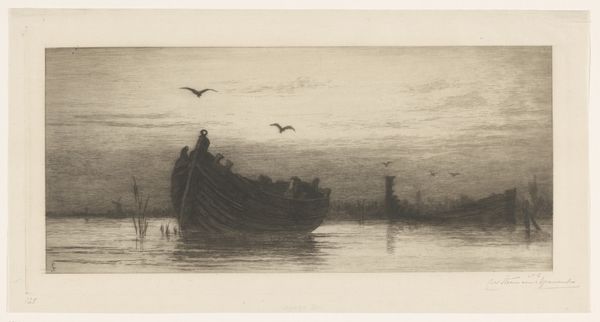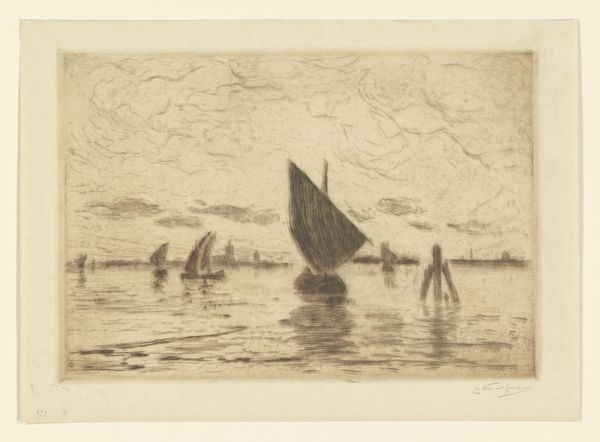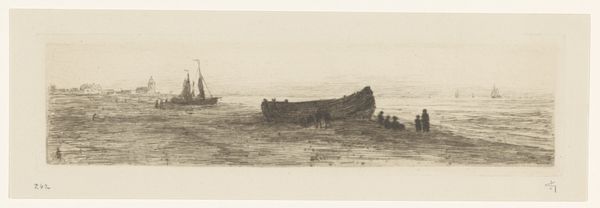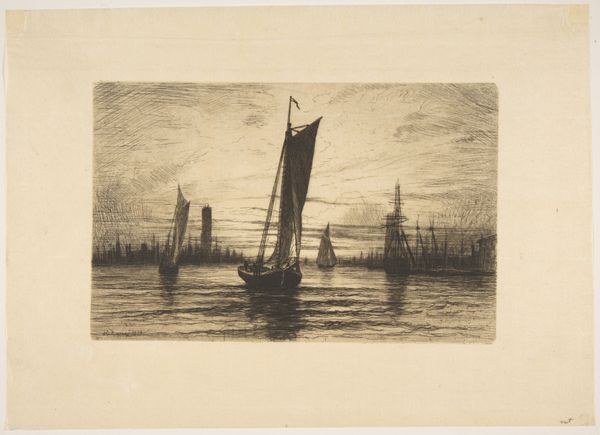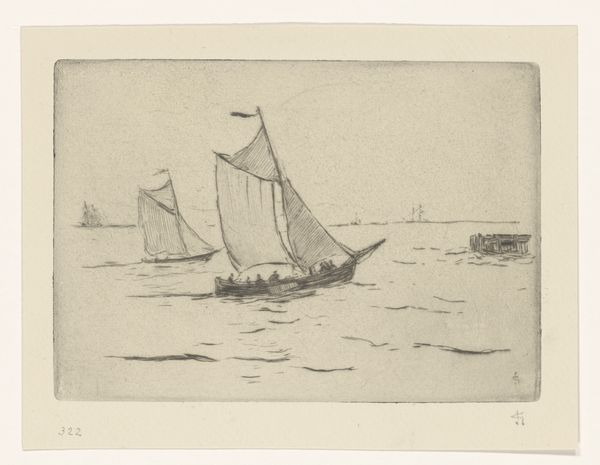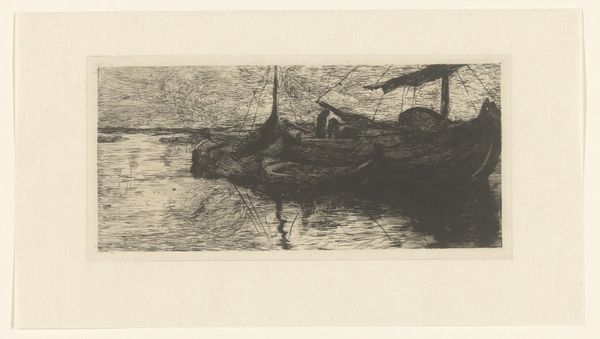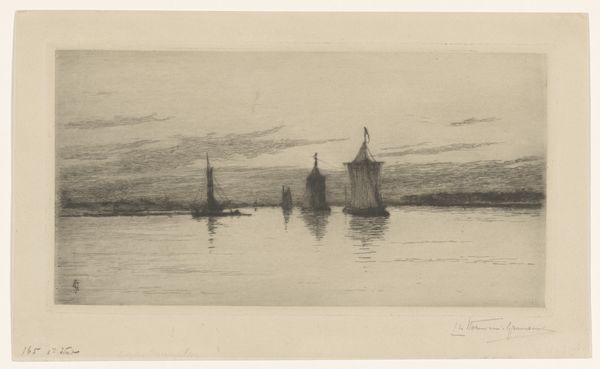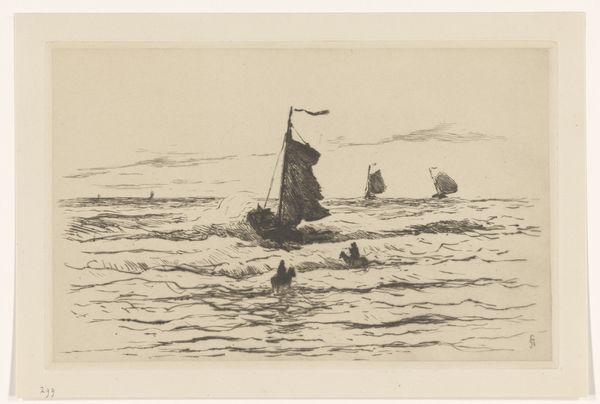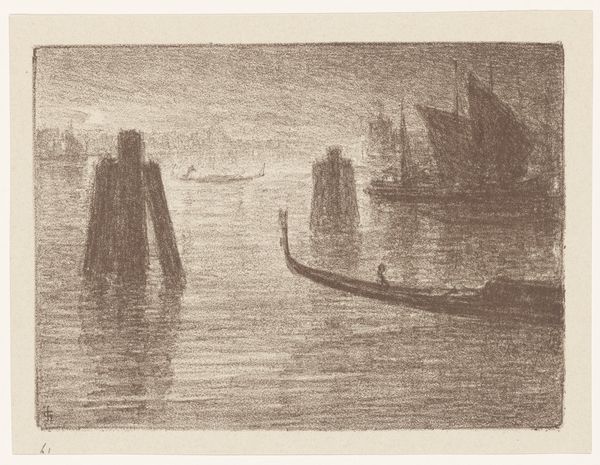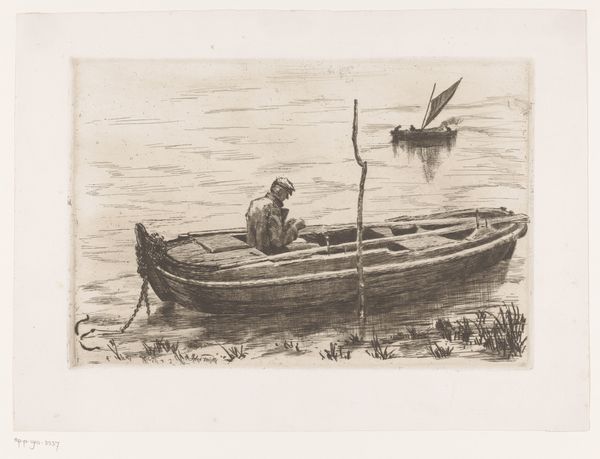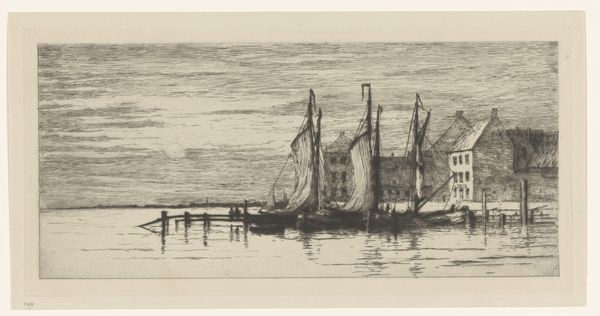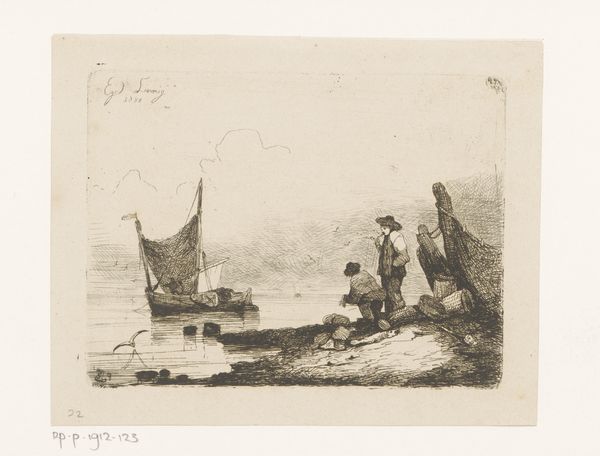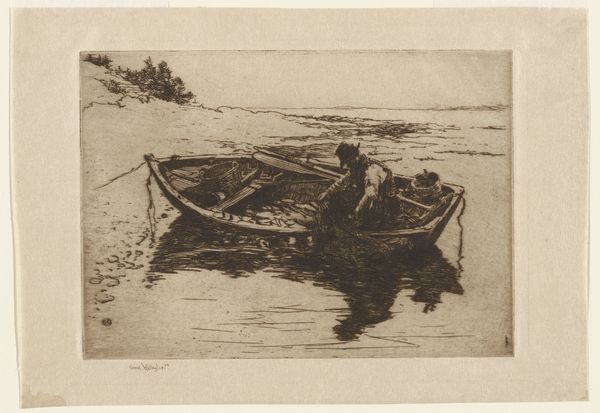
print, etching
# print
#
etching
#
landscape
#
etching
#
realism
Dimensions: height 173 mm, width 340 mm
Copyright: Rijks Museum: Open Domain
Curator: Here we have Carel Nicolaas Storm van 's-Gravesande's 1880 etching, "Wrakken van boten in de Biesbosch," part of the Rijksmuseum's collection. What is your immediate take? Editor: Somber, undeniably somber. It’s a study in decay, isn't it? A kind of elegiac mood hangs over these rotting hulks. Curator: Indeed. The starkness resonates. "Wrakken van boten" translates to "Wrecks of boats" -- emphasizing not only material ruin but also loss and abandonment. Boats often represent journeys and aspirations. Their wreckage symbolizes unrealized potential, voyages cut short. Editor: Absolutely. Look at the medium: etching. That process allows for such nuanced rendering of texture, all those tiny lines that give a very tactile sense of the boats' weathered surfaces. You can almost feel the decaying wood under your fingers, imagining the labor it took to construct these boats and the social structure that supports their building. Curator: Precisely, etching mirrors the slow degradation depicted. Also, take note of the birds flying overhead. They serve as psychopomps—guides of souls to the afterlife, heightening the feeling of transience. This is the Dutch landscape transformed into a Vanitas. Editor: Right. A morbid still-life where nature slowly reclaims discarded tools and ships abandoned in the shallows. It all speaks to a tension between man's desire to harness the land and its eventual and inevitable return to nature. Also consider the lack of color, this greyscale image amplifies our focus on the materiality itself, the grainy pulp quality. Curator: And observe the reflections. Those spectral shapes mirroring the wrecked hulls add another layer, suggesting not only visible ruin but perhaps spiritual echoes as well. They conjure images of ghostly journeys, reminding us of the countless untold narratives tied to this region. Editor: True, it moves past pure representation. This piece uses realism to expose an ongoing cycle of production and discard in very powerful ways. Curator: Agreed. An image rich in historical context that also urges a deeper understanding of ephemerality. Editor: So well-observed and hauntingly materialized. An exercise in making obsolescence quite vivid.
Comments
No comments
Be the first to comment and join the conversation on the ultimate creative platform.
